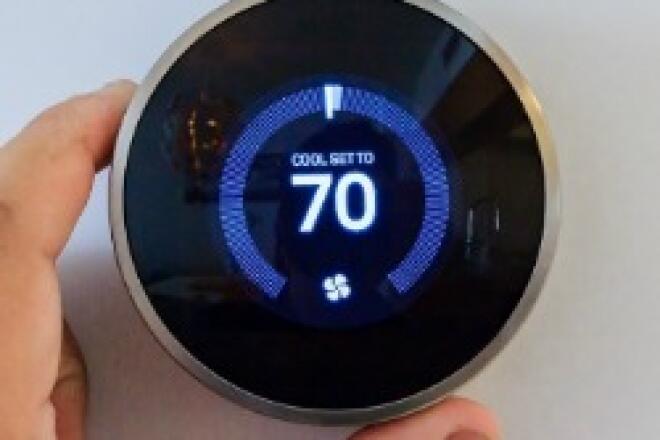
4 Low-Cost Ways to Save Energy at Home
With hot summer weather just around the corner, now is a great time to begin thinking about how you can improve the energy efficiency of your home and prevent sky-high bills.
While some energy-saving upgrades require a significant financial investment on your part, there are fortunately plenty of low-cost ways to make your home’s energy use a bit more manageable.
Let’s take a look at four of these strategies and the estimated savings you can expect:
1. Prevent hot summer air from getting into your home.
A drafty home can cause your cooling costs to skyrocket in the summer months, and solving this issue is a good starting place to making your home more energy efficient. Fortunately, it can be relatively easy and inexpensive for you to get a handle on the situation (as long as you don’t need new windows, insulation, etc.).
Weather-stripping and caulk can both be purchased for under $20 at any home improvement store and are quick and easy to install. Weather-strips should be applied on any movable part of your home (windows, doors, etc.), while caulk should be used for filling cracks and gaps.
If you want a more thorough look at where your home may be losing energy, you can opt for a home energy audit, which will help you identify the energy-efficient improvements that you should prioritize. Some power companies will offer this service at no or little cost to their customers.
According to the Department of Energy, sealing leaks in a drafty home can save you 20 percent or more on heating and cooling, which will lead to major savings over the hot summer months.
2. Upgrade your lighting to more energy-efficient LEDs.
Energy-efficient lightbulbs have come a long way over the past decade. If you haven’t switched out your older, inefficient bulbs yet, upgrading to LEDs is one of the smartest energy decisions that you can make around your home.
According to the Department of Energy’s estimates, LEDs use up to 80 percent less energy and last up to 25 times longer than incandescent bulbs. They are also safer to have in the home and less of a fire hazard since they don’t rely on heat to produce light.
Additionally, the prices of LED bulbs have also decreased significantly in recent years, and these energy-efficient bulbs can be found for as low as $1-2 per bulb, especially when purchased in bulk. If you replace your home’s five most commonly used bulbs with LEDs (an investment of under $20), you can expect to save around $75 each year. Other estimates suggest around $300 in average savings per year if you replace all of the bulbs in your home, but this figure will vary depending on home size, your current bulbs, your habits, etc.
3. Schedule regular maintenance for your cooling system.
Before the hottest weather arrives, it’s a good idea to schedule maintenance of your home’s cooling system. An air conditioner’s components – such as the filters, coils and fins – need regular maintenance to run efficiently over the years, and if you neglect regular tune-ups, it could lead to a decline in air conditioning performance, meaning more energy use and less cool air.
On average, it will run you about $90 to have a professional contractor complete an annual tune-up of your air conditioner or heat pump system, which is relatively inexpensive compared to potential savings on your cooling costs over the summer.
However, you may be able to perform some elements of this routine maintenance on your own. For example, removing dirt, leaves and other debris from around the condenser unit can improve performance, and almost anyone can regularly replace air filters on a regular basis, which should only cost you $10 or so. The Department of Energy states that simply replacing a dirty filter with a clean one can lower your air conditioner’s energy use by up to 15 percent.
4. Turn off your lights, unplug devices and adjust your thermostat.
Finally, there are many changes to your behaviors you can make at home that can save energy without any cost to you. The old adage “Turn off the lights when you leave a room” is still great advice for being more energy efficient – particularly if you haven’t upgraded to LED bulbs yet.
In addition, many devices around your home, like your cable box, computer or TV, still draw some power while turned off or in standby mode, which is often called “standby power” or “vampire energy”. You can unplug these devices when not in use – or more conveniently, use a power strip – to save around 10 percent on your energy bills.
Small adjustments to your thermostat can also bring considerable savings over the summer months. According to the Department of Energy, turning back your thermostat 7°F to 10°F for eight hours a day from its normal setting can save you 10 percent or more on heating and cooling. Adding these kinds of changes to your routine can amplify the home energy savings from energy-efficient improvements noted above.
With these few tips, it’s possible to keep your power bills in check over the hot summer months. You may want to also reach out to your power company to see if they have other ideas for ways that you can make your home more energy efficient with little to no cost to you. Some companies offer free energy audits as noted above, and others provide free Energy Saving Kits with LED bulbs, power strips and other energy-saving measures to get you started on the path to energy efficiency.
To learn more about ways you save energy at home this summer, check out our Energy Efficiency resources here.



